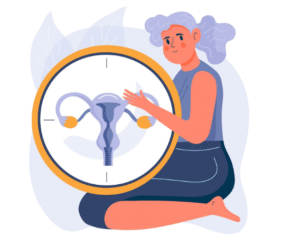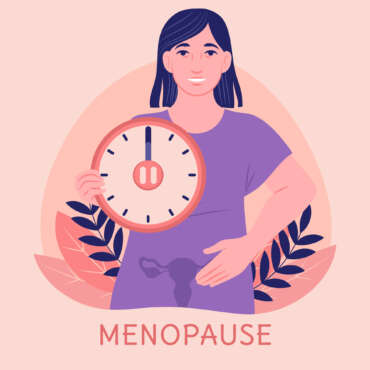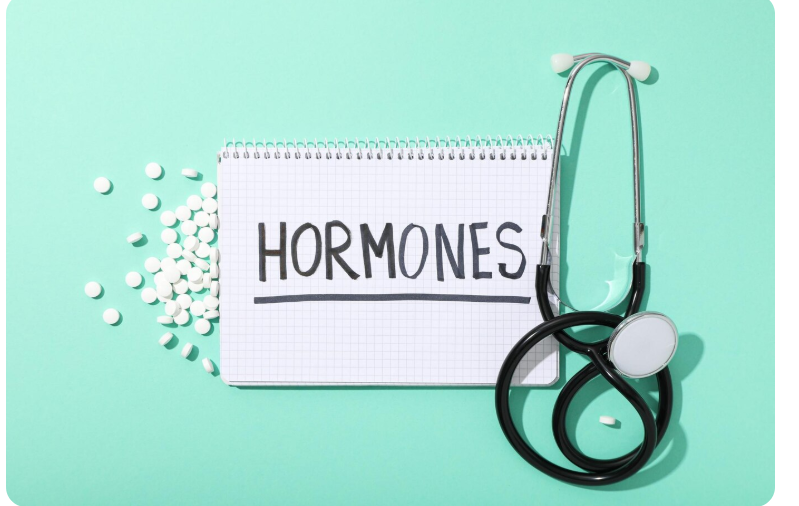
Navigating Perimenopause: What to Expect Before Menopause Begins
The period before menopause, when your ovaries gradually stop producing as much estrogen and progesterone, is known as the perimenopause. The average duration of this natural phase is 4 to 8 years, though some people may experience it for up to 10 years. It usually starts between the late 30s and early 40s (usually around age 47). Despite being a normal aspect of aging, perimenopause’s fluctuating hormone levels can cause a variety of symptoms. Let’s talk about what to anticipate and how to confidently, thoughtfully, and knowledgeablely manage symptoms.
What does perimenopause mean?
“Perimenopause” literally means “around menopause.” It is the time when hormones change before periods stop.
During this time, people often have irregular periods, changes in hormones, and physical or emotional symptoms. Fertility goes down, but it may stay that way until menopause, which is 12 months in a row without a period.
It’s interesting to note that estrogen levels may be 20–30% higher than they were before menopause, but they can change a lot, which can cause symptoms.
What causes it
As ovarian function declines, the levels of estrogen and progesterone change in ways that are hard to predict. These hormones have an effect on many systems in the body:
Thermoregulation: Low estrogen levels make it hard to control body temperature, which can lead to night sweats and hot flashes.
Mood: Changes in hormones can affect neurotransmitters like serotonin and cortisol, which can make you more irritable or anxious.
Cognition: Estrogen helps with memory and focus, but changes in its levels can cause “brain fog” and forgetfulness.
Bone and Metabolism: Less hormone support slows down metabolism, makes you gain weight (especially around your stomach), and lowers bone density.
Neurological and Inflammation Risk: Perimenopause seems to be a pro-inflammatory state, which may raise the risk of conditions like Alzheimer’s disease later in life.
Typical Perimenopausal Symptoms
Not all women experience all of the symptoms, which differ in type and intensity:
Periods may be lighter, heavier, shorter, longer, or skipped completely due to irregular menstrual cycles (femininehealth.orgMedicover Hospitals).
About 37% of women in the late perimenopause experience hot flashes and night sweats, which is five times more common than in premenopausal women.
Fatigue and sleep disturbances
Anxiety, depression, or mood swings
Problems with memory, focus, or mental clarity are known as brain fog.
Reduced libido and dry vagina
Gaining weight and altering one’s body composition
Changes in skin or hair, palpitations, or joint pain
How long does it last and when does it start?
Early to mid-40s is the typical onset (average ~47).
Duration: 4–8 years on average (some reports go up to 10 years or longer).
Because of this variability, some women may transition later in life, while others may experience early perimenopause as early as age 35. The Journal of Pharmaceuticals
Although prevalence varies by region, up to 50% of middle-aged women worldwide report moderate to severe symptoms; for instance, Asian women frequently report lower rates of hot flashes than Western women.
Perimenopause Management
A) Dietary and Lifestyle Techniques
Nutrition that is balanced: To promote bone and heart health, place an emphasis on whole foods, such as vegetables, legumes, lean proteins, healthy fats, and calcium-rich sources.
Limit triggers: Steer clear of processed foods, sugar, alcohol, and caffeine in excess as these can cause mood swings, hot flashes, and disturbed sleep.
Drink plenty of water to help reduce vulvovaginal dryness and hot flashes.
B) Physical activity and exercise
Strength training twice a week: supports bone density, increases muscle mass, and aids in weight and metabolism maintenance .
Cardio: Exercises like cycling, walking, and brisk movement enhance mental and physical health.
Pilates or yoga: Provides flexibility, stress reduction, and better sleep.
C) Stress and Sleep Management
Make good sleep hygiene a priority: Avoid screens and stimulants right before bed, create a sleep schedule, and keep the bedroom cool.
Tools for reducing stress: Although there is conflicting evidence regarding the direct symptom reduction of mindfulness, meditation, yoga, or deep breathing, these practices can help reduce anxiety and mood swings.
D) Monitoring Symptoms
Keep a daily journal or use tracking apps (such as Perimenopause Hub or Clue) to record your mood, cycles, and symptoms. This facilitates pattern recognition and enhances dialogue with your healthcare provider.
Treatment and Medical Choices

Hormonal Therapy
Hormonal contraceptives: When ovulation continues in the early stages of perimenopause, these can control cycles and lessen symptoms.
Hormone therapy for menopause (HRT/MHT): Hot flashes, mood, and bone health are all improved by estrogen ± progestogen; however, it is best suited for postmenopausal or late perimenopausal women after a thorough risk assessment (e.g. risks for clotting, breast cancer, strokes).
Vaginal estrogen: A localized treatment with little systemic absorption for discomfort and dryness.
Non-Hormonal Drugs
SSRIs/SNRIs: Good for hot flashes and mood swings; examples include paroxetine, venlafaxine, and escitalopram.
When hormonal treatment is not an option, gabapentin and fezolinetant can help reduce hot flashes.
Clinical hypnosis and cognitive behavioral therapy (CBT) have been demonstrated to help control emotional disturbance and hot flashes.
Alternative Medicines
Despite the popularity of herbal remedies like maca, ashwagandha, evening primrose, and black cohosh, most high-quality research shows inconsistent benefits; many supplements lack proven results, so before using them, speak with your healthcare provider.
Overcoming Myths & Looking for Assistance
Experts advise against “catastrophizing” the perimenopause. Particularly early in the transition, many women have mild to moderate symptoms, so awareness and perspective are important.
Since estrogen levels rise before they fall, it is becoming more and more advised to use symptoms to make diagnoses rather than just menstrual fluctuations. FeminineHealth.org, The Guardian.
It is crucial to properly evaluate important conditions like thyroid disorders, PCOS, endometriosis, and fibroids because they can mimic perimenopausal symptoms. The Australian.
Up to 90% of women say they are not well-informed about perimenopause symptoms and available treatments, indicating that awareness gaps still exist.
The Significance of Long-Term Health
Perimenopause has long-term effects in addition to its immediate symptoms:
Decreased estrogen is linked to higher risks of cardiovascular disease, osteoporosis, and potentially cognitive decline in later life.
Early onset (prior to age 42) may increase the risk of stroke and other health consequences.
During and after the transition, proactive care is advised, which includes managing metabolic risk, tracking bone density, and supporting lifestyle changes.
What to anticipate from Chennai’s Birthwave Clinic
At Birthwave Gynaecology Clinic, we provide a personalized, evidence-based, and caring approach:
knowledgeable medical professionals with a strong background in hormone health and perimenopausal care.
Comprehensive evaluations, including hormone panels, symptom audits, and risk assessments for bones and cardiovascular disease.
Customized programs: integrating stress management, exercise, nutrition, and medical/bioidentical treatments as required.
Associated assistance includes patient education, mental health referrals, nutritional counseling, and pelvic physical therapy.
Maintaining continuity of care involves lab work, follow-ups, and adjusting the plan to meet your changing needs.
Establishing a Self-Care Schedule
This weekly structure will assist you in navigating the perimenopause:
Duration
Practice Every Day
A symptom log, breathing or mindfulness techniques, moderate exercise, hydration, and balanced meals
Every week,
two-and-a-half strength-training sessions, aerobic or gentle yoga, workshops, or educational reading
Every month
Examine symptom patterns, lab results, check-ins for consultations, and think about taking vitamin D and bone supplements.
- When to Ask for Assistance
If your symptoms are interfering with your everyday life, sleep, or emotional health, please see a gynecologist.
You suffer from anemia, spotting, or heavy or frequent bleeding.
You’re not sure if the symptoms are related to perimenopause or something else.
Every woman at Birthwave Clinic receives individualized, guided care to promote resilience, health, and well-being throughout her perimenopausal journey.
In conclusion
Although it is natural, the perimenopause is a period of transition marked by significant emotional and physical changes. Many women successfully navigate this stage with strength, clarity, and resilience if they receive timely education, make thoughtful lifestyle changes, get medical help when necessary, and have a reliable care team.
Even before menopause officially starts, we at Birthwave Clinic are dedicated to assisting women in feeling heard, understood, and supported at every stage.

